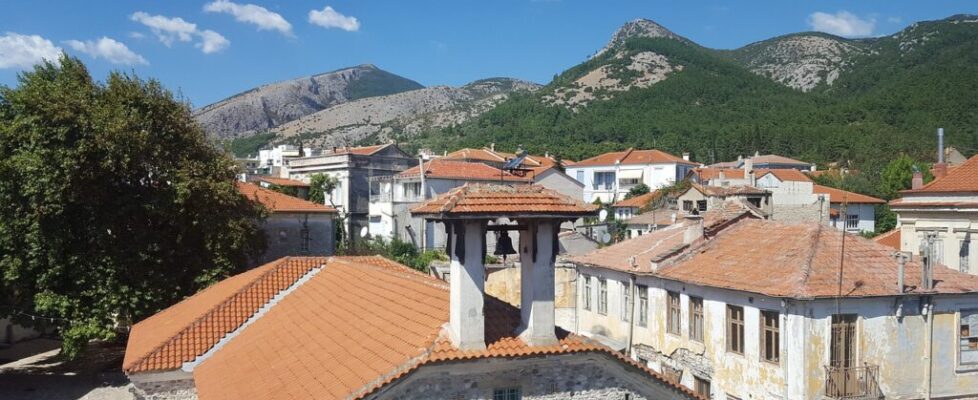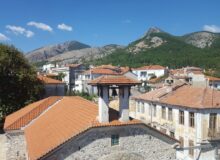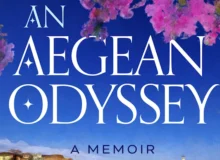Xanthi
The city of Xanthi in Thrace in eastern Greece is a lively university town with several museums, old mansions and one of the best markets in Thrace.

Xanthi in Thrace is a lively town that blends centuries of history with a rich cultural mosaic. Known as the “City of a Thousand Colours,” Xanthi is well worth seeing because of its preserved old town, diverse population, and a unique blend of Eastern and Western influences. From its Ottoman-era architecture to its lively festivals and the presence of the Pomak people, Xanthi offers visitors a delightfully different side of Greece.

The History of Xanthi
Xanthi’s roots stretch deep into antiquity. The area was once part of ancient Thrace, a region inhabited by Thracian tribes and later incorporated into the Roman and Byzantine Empires. The modern town of Xanthi emerged during the Ottoman period, gaining prominence in the 18th and 19th centuries as a center of tobacco production and trade. This economic boom brought wealth and cosmopolitan flair, evident in the neoclassical mansions and ornate buildings that still grace the old town today.
The town’s strategic location near the Rhodope Mountains and the Nestos River made it a cultural crossroads. After the Balkan Wars and the Treaty of Lausanne in 1923, Xanthi became part of modern Greece, and its population diversified further with the arrival of Greek refugees from Asia Minor. This layered history is reflected in the town’s architecture, cuisine, and social fabric.
Exploring Xanthi’s Old Town
One of Xanthi’s most captivating features is its Old Town, a labyrinth of cobbled streets, colourful mansions, and Ottoman-era buildings. Walking through this district feels like stepping back in time. The architecture showcases a blend of neoclassical and Balkan styles, with wooden balconies, ornate facades, and hidden courtyards.
Museums and Cultural Attractions
Xanthi boasts a variety of museums and cultural venues that reflect its diverse heritage:
- Folk and History Museum of Xanthi: Located in the beautifully preserved Kougioumtzoglou mansion, this museum showcases the lifestyle of Xanthi’s affluent families during the tobacco boom. Exhibits include traditional attire, furniture, and archival photographs.
- Natural History Museum: Situated in the nearby village of Stavroupoli, a half-hour drive away, this museum focuses on the flora and fauna of the Rhodope Mountains and the Nestos River ecosystem.
- Ecclesiastical Museum: Housed in the Metropolis of Xanthi, this museum features religious artifacts, icons, and manuscripts from the Byzantine and post-Byzantine periods.
Xanthi’s Amazing Market
- Bazaar of Xanthi: While not a museum, the town’s weekly bazaar is a cultural experience in itself. Held every Saturday, it’s a bustling market where locals and visitors mingle, shop for fresh produce, textiles, and traditional goods, and enjoy street food.
Festivals and Events
Xanthi is renowned for its annual Carnival, one of the largest in Greece. The event blends ancient Dionysian traditions with modern festivities, featuring parades, music, dance, and elaborate costumes.
The Old Town Festival, held every September, celebrates local culture with concerts, art exhibitions, and traditional food.

Held as part of the broader Old Town Festival, the Graffiti Festival in Xanthi brings together local and international street artists to transform the town’s walls into colourful canvases. The event features live painting sessions, exhibitions, and workshops. Artists showcase a range of styles—from abstract and surrealist murals to politically charged pieces—reflecting the town’s dynamic cultural identity
Nature and Outdoor Activities

Surrounded by the Rhodope Mountains and close to the Nestos River, Xanthi is a paradise for nature lovers. Hiking, birdwatching, and kayaking are popular activities in the region. The Nestos Gorge offers breathtaking views and is home to rare bird species and lush vegetation.
The Livaditis Waterfall, one of the tallest in the whole of the Balkans, is another natural wonder worth visiting. The nearby Lake Vistonida and Porto Lagos area are ideal for eco-tourism, with opportunities to observe flamingos, herons, and other wildlife.
The Pomak People: A Cultural Mosaic
One of the most distinctive aspects of Xanthi is its Pomak community, a Muslim minority group of Slavic origin residing primarily in the mountainous villages of the region. The Pomaks speak a dialect of Bulgarian and practice Islam, yet they have lived in Greece for centuries, contributing to the area’s multicultural identity.
The Pomak villages, such as Echinos, Thermes, and Kotyli, are known for their traditional architecture, hospitality, and unique customs. Visitors can explore these villages to learn about Pomak crafts, music, and cuisine. The coexistence of Greek Orthodox Christians, Muslims, and other ethnic groups in Xanthi is a testament to the town’s inclusive spirit and historical resilience. You can reach the villages by driving north out of town towards the border with Bulgaria. Thermes is less than 3 kms (2 miles) from the border.
Xanthi’s Local Flavours
Xanthi’s culinary scene naturally reflects its multicultural heritage. Traditional Greek dishes are complemented by Thracian, Turkish, and Balkan influences. Must-try specialties include:
- Kavourmas: A preserved meat dish often served with eggs or vegetables.
- Bougatsa: A sweet or savory pastry filled with custard, cheese, or minced meat.
- Baklava and Saragli: Syrupy desserts with layers of phyllo and nuts, showcasing Ottoman culinary traditions.
Local tavernas and cafes in the Old Town offer a cosy atmosphere to enjoy these delicacies, often accompanied by live music.
Shopping and Local Crafts
Xanthi is known for its handmade textiles, ceramics, and traditional sweets. The Saturday bazaar is the best place to find local products, including herbs, honey, and handcrafted items. The town also has several boutique shops selling regional wines and spirits, such as tsipouro and ouzo.






















